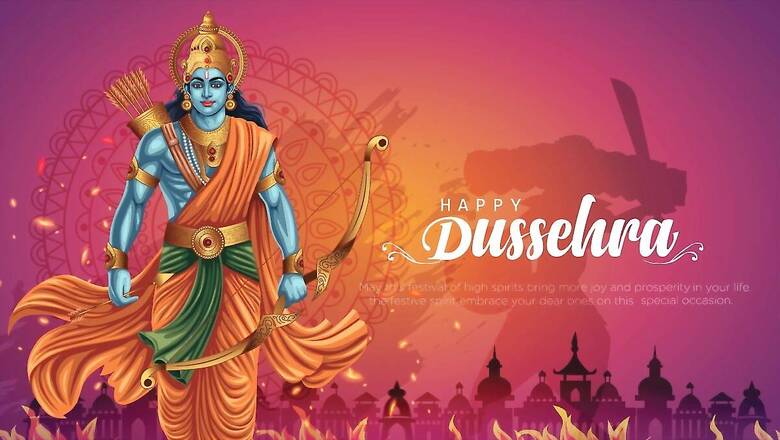
views
Dussehra, also called Vijayadashami, is a major Hindu festival commemorating Lord Rama’s victory over Ravana. The day is also celebrated to honour Goddess Durga’s triumph over demon Mahishasur and marks the end of Navratri. This yearly Hindu festival symbolises the triumph of good over evil and is widely observed throughout the country. According to the Hindu calendar, it is traditionally observed on the 10th day of the festival and falls in Ashwin or Kartik month.
When is Dussehra 2024? Date and Puja Muhurat
Dussehra celebrates the culmination of the nine-day Navratri festival. This year, Dussehra will be grandly celebrated on Saturday, October 12. According to Drik Panchang, the timings for numerous rituals and events on this day are as follows:
- Dashami Tithi Begins: 10:58 AM on Saturday, October 12, 2024
- Dashami Tithi Ends: 9:08 AM on Sunday, October 13, 2024
- Shravana Nakshatra Begins: 5:25 AM on Saturday, October 12, 2024
- Shravana Nakshatra Ends: 4:27 AM on Sunday, October 13, 2024
- Vijay Muhurat: 2:03 PM to 2:49 PM on Saturday, October 12, 2024
- Aparahna Puja Time: 1:17 PM to 3:35 PM on Sunday, October 13, 2024
Dussehra 2024 Rituals: Celebrating Good Over Evil
- FastingMany individuals observe a nine-day fast during Navratri.
- Prayers and offeringsDevotees make offerings to Lord Rama and other Hindu gods.
- Shastra PujaAlso called Ayudha Puja, it is a traditional Hindu ritual in which tools, weapons and implements are worshipped.
- Pandal decorationsPandals are adorned with flowers, lights and other decoratives.
- Burning of effigiesOn the 10th day of the nine-day Navratri festival, effigies of Ravana, Kumbhakarna and Meghnad are set ablaze in bonfires.
- RamlilaMany communities stage a spectacular Ramayana performance.
- Idol installationDurga idols are put in pandals for devotees to take darshan and seek blessings.
- Prayers and ritualsIn front of the Durga idols, devotees pray and perform rituals.
- Idol immersionOn Navratri’s 10th day, Durga idols are immersed in rivers and lakes.
Religious Significance of Dussehra 2024
Dussehra has Hindu mythological roots and is celebrated for two reasons. The first is to commemorate Lord Rama’s victory over the 10-headed demon ruler Ravana. Ravan kidnapped Sita (Lord Rama’s wife) and held her captive in his dominion, Lanka.
After an epic fight, Lord Rama saves his wife from Ravana’s clutches and kills him with the assistance of Vanarsena, Lord Hanuman and Lakshman (Shri Ram’s brother). The celebration honours this victory and represents the triumph of righteousness over sin.
Another reason has to do with the goddess Durga and the buffalo monster Mahishasur. The story is about the nine-day festival, which ends on Navratri. The epic battle between Goddess Durga and Mahishasura, in which Goddess Durga is frequently represented as a warrior goddess, ends with the demon Mahishasura’s death and once again demonstrates the triumph of good over evil. The victory of Goddess Durga also denotes goodness and peace on Earth.
We learn a lot from Dussehra, a celebration that encourages us to live virtuously and uprightly. The significance of devotion, morality and tenacity in conquering obstacles is symbolised by Dussehra, as evidenced by Lord Rama’s commitment to justice and his defence of his wife Sita.
The triumph of adharma (wickedness) over dharma (righteousness) is symbolised by Dussehra. Ravana’s 10 heads are said to stand for the 10 vices that must be overcome in people, including ego, greed, jealousy, selfishness and lust.
Vijayadashami: The Day of Victory
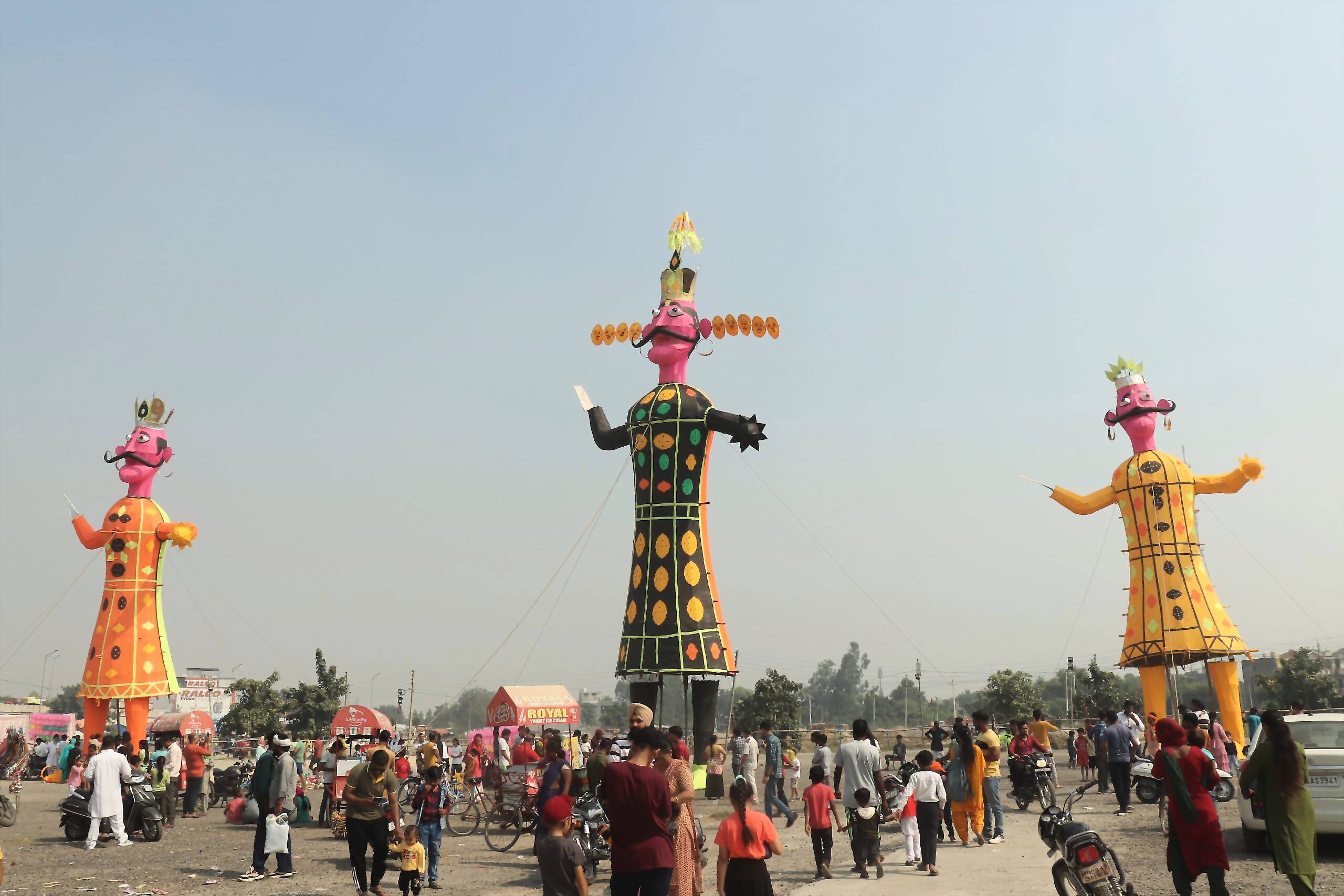
Dussehra is also known as Vijayadashami, which translates to “victory on the tenth day.” This festival marks the triumph of good over evil, celebrating Lord Rama’s victory over the demon king Ravana in the Ramayana. It falls on the tenth day of the Hindu lunar month of Ashvin and is a significant festival in various parts of India, symbolizing the end of the Navaratri festival. Celebrations include the burning of effigies of Ravana and joyous festivities that reflect cultural traditions.
How Dussehra is Celebrated Across India
Dussehra is celebrated in various ways across the country. Here is a summary of how different regions commemorate this festival:
North India (Ramlila Performances)
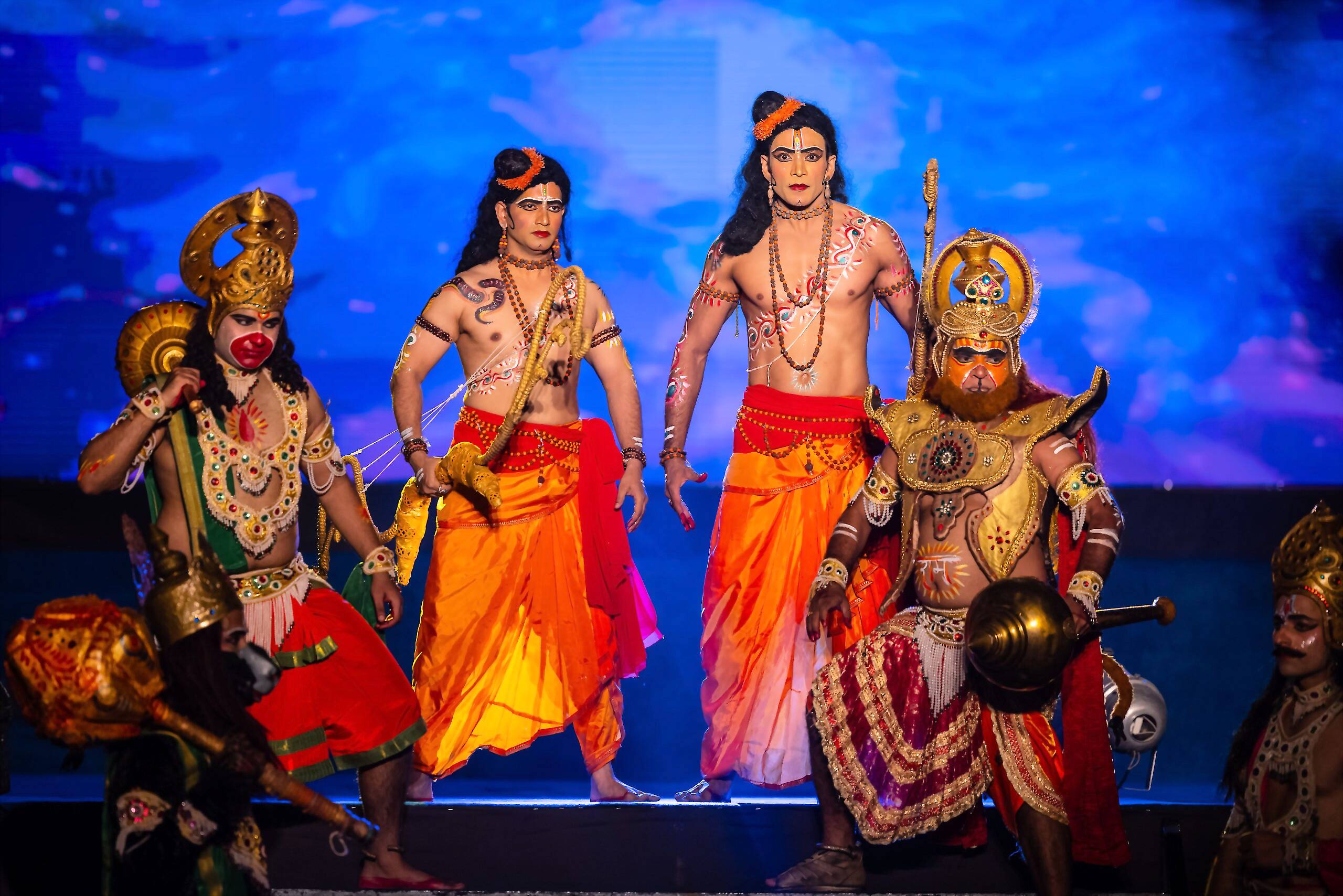
A dramatic retelling of the Ramayana concludes with Lord Rama defeating Ravana. These events, which can continue up to 10 days, culminate on Dussehra with the burning of effigies of Ravana, Meghnad and Kumbhkaran, which are adorned with fireworks to signify the eradication of evil.
South India (Mysore Dasara)

Mysore Dasara is famous in Karnataka for its magnificence, which includes a royal procession (Jumbo Savari) led by beautifully dressed elephants carrying the Goddess Chamundeshwari’s statue. The Mysore Palace is decorated with thousands of lights, producing a breathtaking sight.
Eastern India (Durga Puja)

Dussehra coincides with the end of Durga Puja in some states, such as West Bengal, where magnificent pandals hold exquisitely carved Durga idols. The event finishes with the immersion (Visarjan) of these statues in rivers or ponds, representing the goddess’ return to her celestial dwelling and Durga’s victory over Mahishasura.
Western India (Navratri and Apta Tree Worship)
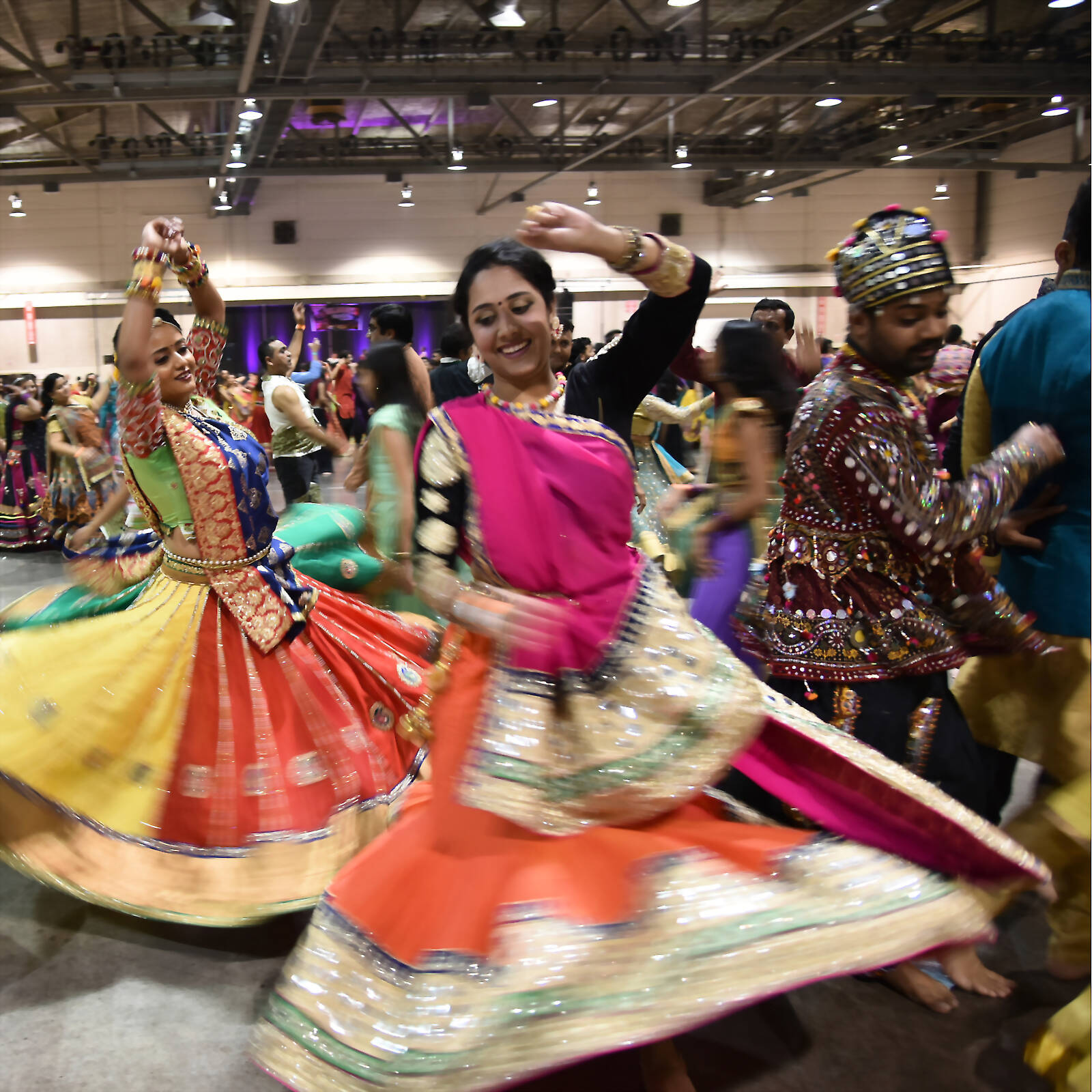
In Gujarat and other states, the Navratri festival is celebrated with dancing to lively folk dances like Dandiya Raas and Garba that last well into the night before Dussehra. Durga idols are eventually immersed in water during Dussehra celebrations. In addition, the Apta tree’s leaves are traded in Maharashtra as representations of gold, marking the day as one of success and wealth.
The Importance of Ravana Dahan on Dussehra
- Symbol of Good Over EvilRavana Dahan, the burning of effigies of Ravana, symbolizes the victory of good over evil. It serves as a reminder that righteousness ultimately triumphs over wrongdoing.
- Cultural SignificanceThis ritual is an integral part of Dussehra celebrations, showcasing rich cultural traditions. It reinforces moral values and teaches the importance of dharma (righteousness).
- Community InvolvementThe event brings communities together, fostering unity and collaboration. People gather to witness the spectacle, enhancing social bonds and cultural pride.
- Festive AtmosphereRavana Dahan contributes to the festive spirit of Dussehra, with vibrant processions, music, and dance. It creates an atmosphere of joy and celebration, marking the end of the Navaratri festival.
- Educational AspectThe event often includes performances and dramas that narrate the epic Ramayana, educating younger generations about their cultural heritage and moral lessons.
Dussehra 2024 Fasting and Prayers
- Many devotees observe fasting on Dussehra, which may vary from person to person. Some choose to fast for the entire day, while others may have a light meal. Fasting is seen as a way to purify the body and soul, fostering a deeper connection with the divine.
- On Dussehra, devotees also perform special prayers and rituals. This includes offering prayers to Goddess Durga, symbolising strength and protection. Many families set up a sacred space for puja (worship), where they recite hymns, chant mantras, and light lamps.
- In addition to personal rituals, community gatherings often feature elaborate celebrations, including reenactments of the Ramayana and the burning of effigies of Ravana, symbolising the victory of good over evil.
Participating in fasting and prayers during Dussehra not only enhances spiritual connection but also strengthens community bonds, making it a time of reflection, devotion, and celebration.
FAQs About Dussehra 2024
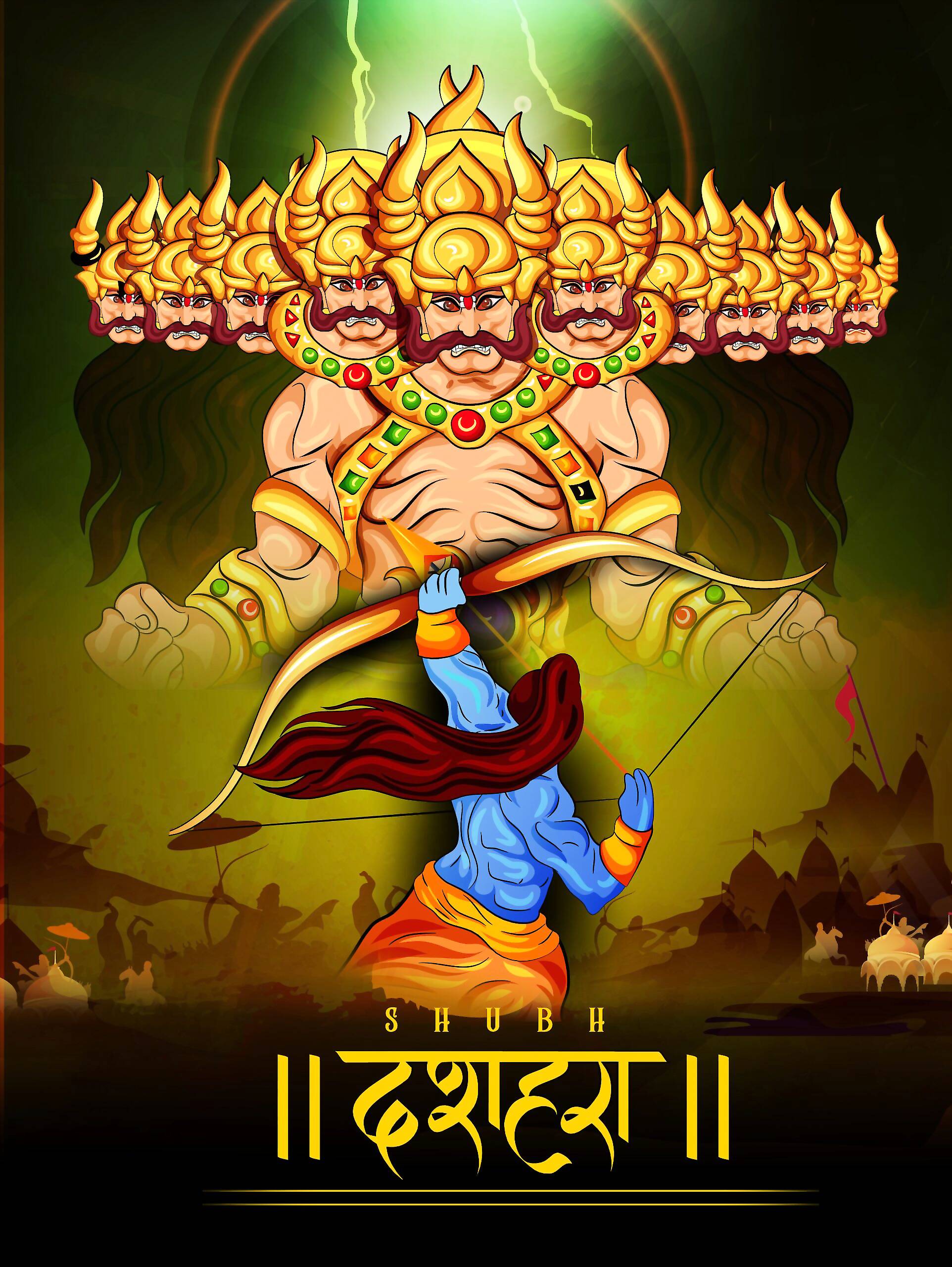
What is Dussehra?
Dussehra is a major Hindu festival that celebrates the victory of Lord Rama over the demon king Ravana, symbolizing the triumph of good over evil. It marks the end of the Navaratri festival.
When is Dussehra in 2024?
Dussehra will be celebrated on October 12, 2024.
What is the significance of Ravana Dahan?
Ravana Dahan, the burning of effigies of Ravana, symbolizes the destruction of evil and the victory of good. It serves as a reminder of the moral values depicted in the Ramayana and promotes the idea that righteousness ultimately prevails.
What are the auspicious timings for Dussehra puja?
The auspicious timings for Dussehra puja can vary based on local traditions and the lunar calendar. In 2024, the most favourable time for the Dussehra puja is generally during the Shami Puja, which takes place in the afternoon.
How is Dussehra celebrated?
Dussehra is celebrated with various rituals, including fasting, prayers, and community events. People often participate in reenactments of the Ramayana, enjoy festive meals, and burn effigies of Ravana.
What is the significance of fasting during Dussehra?
Fasting during Dussehra is a way to purify the body and soul, allowing devotees to focus on spiritual practices and connect with the divine.
Are there specific rituals to perform on Dussehra?
Yes, rituals may include setting up a sacred space for puja, offering prayers to Goddess Durga, reciting hymns, and lighting lamps. Community events often feature performances and celebrations.














Comments
0 comment